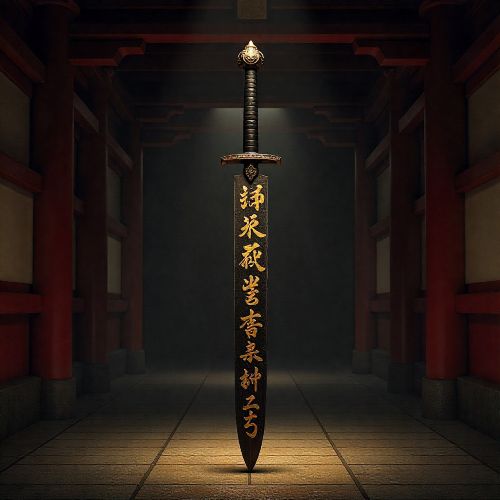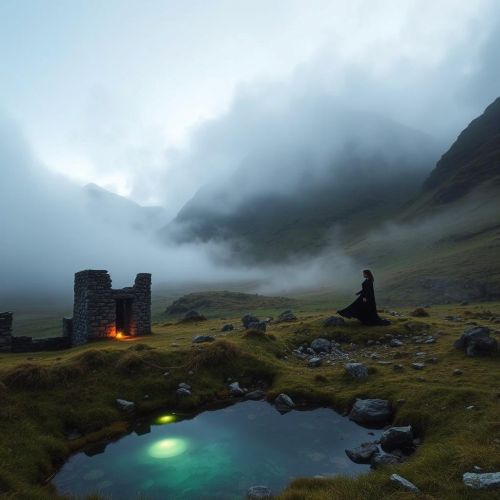Uppsala : The Viking Stronghold
At a glance
| Description | |
|---|---|
| Mythology | Norse Mythology |
| Country | Sweden |
| Closest airport | Stockholm Arlanda Airport (ARN) |
| Type | Natural |
| Accessibility | 10/10 |
Introduction
Uppsala, Sweden’s fourth-largest city, is a place where the ancient and the modern exist side by side in remarkable harmony. Located about 70 kilometers north of Stockholm, it has long been a hub of religion, politics, and learning. The city’s roots reach back thousands of years, with Gamla Uppsala (Old Uppsala) standing as one of the most important archaeological and mythological sites in Northern Europe. While its burial mounds and temple remains speak of a pagan past, its medieval cathedral and world-class university highlight its role in shaping Sweden’s Christian and intellectual identity. Today, Uppsala thrives as a modern city that still carries the weight of centuries of tradition and myth.
Connection with Mythology
The mythological significance of Uppsala lies primarily in Gamla Uppsala, which was once regarded as the spiritual heart of Scandinavia. Norse sagas describe it as the site of the Temple at Uppsala, a great religious structure adorned in gold and surrounded by sacred groves. Here, the gods Thor, Odin, and Freyr were venerated with offerings to secure prosperity, fertility, and victory in battle. Adam of Bremen, writing in the 11th century, recounts elaborate sacrifices that took place every nine years, with animals and even humans given to the gods to ensure the balance of the world.
Equally compelling are the Royal Mounds, three monumental burial sites that dominate the landscape of Gamla Uppsala. Folklore once held that these were the resting places of Thor, Odin, and Freyr themselves, though archaeological studies suggest they are the graves of rulers from the Ynglinga dynasty, a royal family mythologized in Norse tradition. The blending of myth and history at these mounds shows how deeply the divine and political worlds overlapped in early Scandinavian society. Even the grove of sacred trees and the well described by chroniclers evoke parallels with Yggdrasil and Urd’s Well, central elements of Norse cosmology. Uppsala was thus not only a geographical center but also a symbolic representation of the Norse universe.
Ways to Get There
Traveling to Uppsala today is simple, making it an easy day trip or extended stay for those exploring Sweden. Trains are the most convenient option, with frequent departures from Stockholm Central Station reaching Uppsala in about 40 minutes. For international visitors, Stockholm Arlanda Airport is only 35 kilometers away, with direct train and bus services to the city. Buses also run regularly between Stockholm and Uppsala, and within the city, local lines connect seamlessly to Gamla Uppsala and other attractions.
For travelers who prefer driving, the E4 highway provides a quick and scenic route between Stockholm and Uppsala, covering just over 70 kilometers. Once in the city, taxis and ride-sharing services are readily available, while cycling is particularly popular thanks to Uppsala’s flat terrain and extensive bike paths. For those who enjoy walking, many of Uppsala’s most significant historical sites, including the cathedral, university buildings, and museums, are clustered within easy reach of one another.
What to Look For
Uppsala’s landscape is dotted with sites that tell its story from the Iron Age through the Viking era and into modernity. At Gamla Uppsala, the Royal Mounds rise above the plains, a reminder of ancient kings and their mythological associations. The Gamla Uppsala Museum offers context with displays of artifacts, reconstructions of Viking life, and detailed explanations of burial practices. Nearby, the 12th-century Gamla Uppsala Church stands on the probable site of the old pagan temple, symbolizing the region’s shift from Norse religion to Christianity.
In the city center, Uppsala Cathedral dominates the skyline. Built in the 13th century, it is Scandinavia’s largest church and houses the tombs of Swedish monarchs and saints. Close by, the Gustavianum Museum, once part of Uppsala University, exhibits treasures like the Augsburg Art Cabinet and Viking artifacts. The Carolina Rediviva Library, home to the Codex Argenteus or “Silver Bible,” is another essential stop for lovers of history and literature.
For those inspired by science and nature, the Linnaeus Garden and Linnaeus Museum celebrate the life of Carl Linnaeus, the father of modern taxonomy, who worked as a professor at Uppsala University. Contemporary culture thrives as well in spaces like Uppsala Konsert & Kongress, a striking modern venue for performances and events, and in the city’s thriving cafés, restaurants, and boutiques.
Need a place to stay? Book your hotel room now!
Importance in cultural history
The cultural history of Uppsala mirrors the broader story of Sweden’s evolution from a pagan, tribal society into a Christian kingdom and later an intellectual powerhouse. During the Iron Age, the wealth of Gamla Uppsala came from trade and agriculture, establishing it as a vital seat of power. It was here that the Norse gods were once honored with elaborate rituals, reflecting both spiritual devotion and social cohesion.
With the Christianization of Sweden in the late 10th and early 11th centuries, Uppsala became a center of the new faith. The old temple gave way to churches, and in 1164 Uppsala was declared the seat of the Archbishopric, making it the ecclesiastical capital of Sweden. This cemented its authority not only as a religious hub but also as a political and cultural beacon.
The founding of Uppsala University in 1477 marked another turning point, establishing it as the first university in the Nordic countries. For centuries, it has been the site of groundbreaking research in theology, law, medicine, and the natural sciences, with scholars like Linnaeus leaving an indelible mark on the world. Thus, Uppsala’s importance lies not only in its mythological and religious past but also in its enduring contributions to knowledge, governance, and culture.
Best time to travel
Visiting Uppsala is rewarding at any time of year, though the season you choose will shape your experience. Summer, from June to August, is the most popular period, offering long daylight hours, pleasant temperatures between 15°C and 22°C, and outdoor festivals that celebrate both modern Swedish culture and Viking heritage. Spring and early autumn provide milder weather with fewer crowds, making them ideal for travelers seeking a quieter atmosphere.
Winter, though cold and dark, transforms Uppsala into a scene straight from Norse legend. Snow blankets the burial mounds and rooftops, creating a stark beauty that connects visitors with the city’s ancient roots. While daylight is limited, the peacefulness of the sites in winter allows for a more reflective visit. Whether you come in summer for festivals or in winter for an intimate encounter with history, Uppsala offers something profound in every season.
Source
Airial Travel. (2025, September 14). Royal Mounds Gamla Uppsala. https://www.airial.travel/attractions/sweden/royal-mounds-gamla-uppsala-xlrn0ATx
Bray, S. G. (2023, December 10). The Norse Gods: An Intro to Viking Mythology & Key Sites. Green Global Travel. https://greenglobaltravel.com/norse-gods-viking-mythology/
Uppsala Marknadsföring. (2024, February 6). Uppsala in Sweden – a vibrant university town. VisitSweden. https://visitsweden.com/where-to-go/middle-sweden/uppland/uppsala/
World History Encyclopedia. (2001, November 12). Norse mythology. Wikipedia. https://en.wikipedia.org/wiki/Norse_mythology
The Hidden North. (2025, May 4). The History of Uppsala – Sweden’s Historic Centre. https://thehiddennorth.com/the-history-of-uppsala-swedens-historic-centre/
Wikipedia. (2004, January 30). Temple at Uppsala. https://en.wikipedia.org/wiki/Temple_at_Uppsala
Mark, J. J. (2021, September 23). Temple at Uppsala. World History Encyclopedia. https://www.worldhistory.org/Temple_at_Uppsala/
Destination Uppsala. (n.d.). Vikings in Uppsala. https://destinationuppsala.se/en/guides/vikings-in-uppsala/
Frequently Asked Questions
Lorem ipsum dolor sit amet, consectetur adipiscing?
Lorem ipsum dolor sit amet, consectetur adipiscing elit. Praesent convallis vestibulum justo, ac tincidunt nunc vehicula quis. Nullam id dolor quis orci malesuada feugiat. Curabitur aliquet libero at urna ullamcorper, ac ultricies nulla dapibus.
Lorem ipsum dolor sit amet, consectetur adipiscing?
Lorem ipsum dolor sit amet, consectetur adipiscing elit. Praesent convallis vestibulum justo, ac tincidunt nunc vehicula quis. Nullam id dolor quis orci malesuada feugiat. Curabitur aliquet libero at urna ullamcorper, ac ultricies nulla dapibus.
Lorem ipsum dolor sit amet, consectetur adipiscing?
Lorem ipsum dolor sit amet, consectetur adipiscing elit. Praesent convallis vestibulum justo, ac tincidunt nunc vehicula quis. Nullam id dolor quis orci malesuada feugiat. Curabitur aliquet libero at urna ullamcorper, ac ultricies nulla dapibus.
Lorem ipsum dolor sit amet, consectetur adipiscing?
Lorem ipsum dolor sit amet, consectetur adipiscing elit. Praesent convallis vestibulum justo, ac tincidunt nunc vehicula quis. Nullam id dolor quis orci malesuada feugiat. Curabitur aliquet libero at urna ullamcorper, ac ultricies nulla dapibus.
Lorem ipsum dolor sit amet, consectetur adipiscing?
Lorem ipsum dolor sit amet, consectetur adipiscing elit. Praesent convallis vestibulum justo, ac tincidunt nunc vehicula quis. Nullam id dolor quis orci malesuada feugiat. Curabitur aliquet libero at urna ullamcorper, ac ultricies nulla dapibus.









